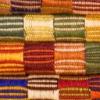Search the Community
Showing results for tags 'soft fine'.
-
Namiki Falcon Collection Fountain Pen in Black with Fine nib, sold and shipped by Amazon US[/th][th] on Amazon.com.au (free shipping with Prime membership) on Amazon.com Gold trim A$153.72 US$98.47 Rhodium trim A$171.72 US$110.00 According to camelcamelcamel, that's a historic low by q...
-
desaturated.thumb.gif.5cb70ef1e977aa313d11eea3616aba7d.gif)
Pilot Falcon In Red Resin With Rhodium Trim And Sf Nib, A$157
A Smug Dill posted a topic in Market Watch
Amazon.com.au is offering the Pilot Falcon Collection fountain pen in Red (resin) with Rhodium Accents and Soft Fine Nib ships from and sold by Amazon US for A$157.11 (inclusive of GST) at the moment. Delivery is free if you have Prime membership with Amazon Australia. Or you could buy it direc... -
I fear I may already know the answer to this question, but I want to be sure that I'm not just missing something (my Google-Fu is notoriously weak)--does the Pilot Custom Heritage 91 in Tsukiyo (or any of the other colors) come in the soft fine or soft extra fine nibs (like the ones on the Pilot Fal...
-
Hello all! I hope you can help me out. I recently bought a Sailor Profit Standard MF with a 21k nib and a Platinum 3776 Chartres Blue with a Soft Fine 14k nib. Problem is, my platinum skips a lot and feels scratchy while writing. I need to apply some pressure in order for the nib not to skip whi...
- 17 replies
-
- platinum
- chartes blue
- (and 4 more)
-

Pilot Custom 74 Soft Fine Review (Black With Gold Accents)
caleb posted a topic in Fountain Pen Reviews
Pilot Custom 74 Soft Fine Review This is my first ever review, so please bear with me and please let me know of any mistakes. Table of ContentsIntroductionPackagingForm Factor and AppearanceNib and SectionConclusion (TLDR) Statistics · Name: Pilot C74 · Country of Origin: Japan, imported to US ·...- 19 replies
-
- pilot
- pilot custom 74
- (and 8 more)
-
Hello, I'm looking to buy a pen from Engeika these days, and can't decide on one of these 2...Black Pilot Custom Heritage 91 and Bourgogne Platinum #3776 century, either with a Soft Fine nib. As far as Japanese pens go, right now I only own a Pilot Decimo and a Smoke CH92, both with Medium nibs, a...
-
Hello all, I just recently purchased a Pilot CH 91 in soft fine and while I adore this pen, it wrote perfectly out of the box, I find myself wanting to experiment with other high end Pilot pens. The only problem is that I have a fairly narrow comfort zone when it comes to nibs. I like fine, wet d...
- 4 replies
-
- pilot ch 91
- soft fine
-
(and 2 more)
Tagged with:






